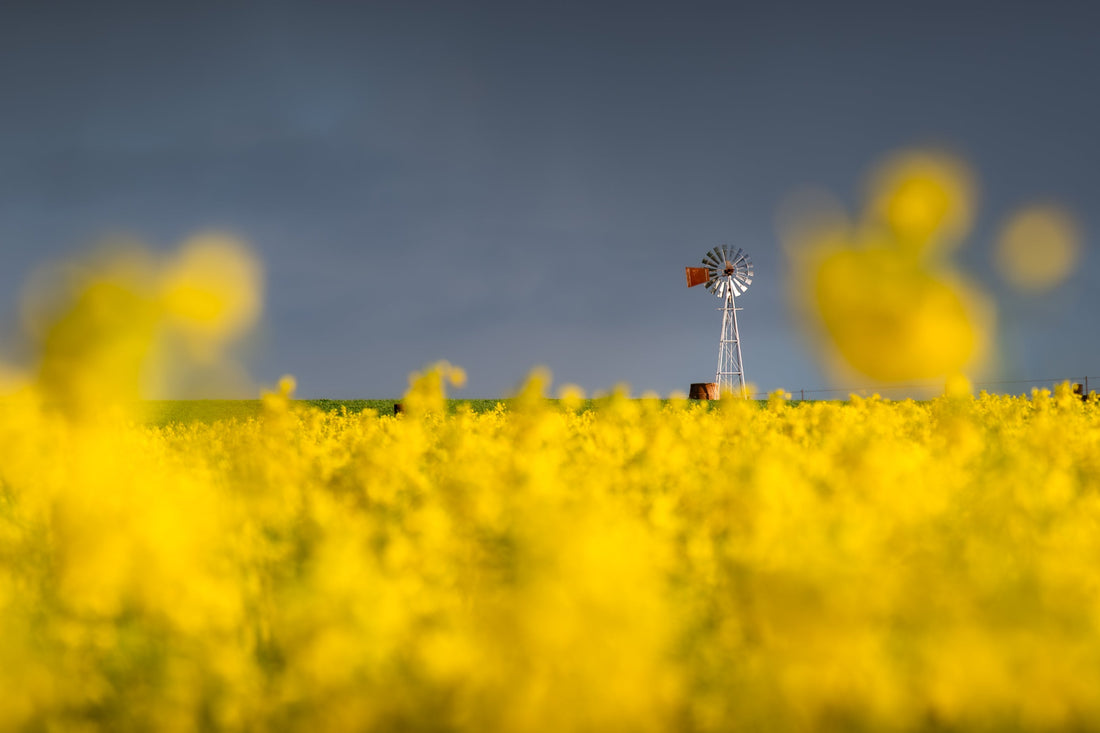
Chasing Yellow and Green in the Overberg
Kyle GoetschShare

At the end of winter and into early spring, the rolling farmlands of the Overberg region transform into one of South Africa’s most striking landscapes. A patchwork of golden canola and lush green wheat stretches to the horizon. It is a scene that feels both wild and perfectly sculpted, as if the hills themselves were designed for photographers.
For me, the Overberg is at its most beautiful in late July through to late August. By this time, the canola is in full bloom and the wheat fields are rich and green, creating the perfect colour contrast. The combination of these two crops, set against the dramatic curves of the land, makes this region a landscape photographer’s dream.

My Favourite Routes
Some of my favourite areas to explore are the stretch between Greyton and Riviersonderend, and the route from Caledon down towards Napier. This whole section of the Overberg is stitched together with a network of dirt roads. This is a huge advantage as you can easily reposition yourself for better angles or chase shifting light without getting stuck on a single tar road. These backroads often reveal compositions you would never find from the main routes.

Why Bad Weather is Good Weather
While it is tempting to head out on a perfectly sunny day, the truth is that the best time to shoot is when the weather turns. Rain, thick clouds, and passing storms can transform the Overberg from pretty to unforgettable. The overcast light makes colours pop, while the breaks in the clouds create incredible bursts of light sweeping across the fields.

These moments are pure magic. When the sun punches through a gap and suddenly the canola lights up like gold against a stormy backdrop it is hard to beat. This kind of weather also brings a bonus: rainbows. In the right conditions, a rainbow arcing over the farmlands can turn a great shot into a once-in-a-lifetime image.

Lenses and Gear Tips
A polarising filter is one of the most useful tools you can bring to the Overberg. It helps cut glare, deepen the blue in the sky, and make the yellow of the canola and the green of the wheat really pop.
For lenses, a 70–200mm or 100–400mm is ideal for capturing intimate scenes in the distance. These focal lengths allow you to isolate pockets of light, patterns in the fields, or a lone tree on a hill. They also create compression, which brings all the layers of the landscape closer together, giving a sense of depth and connection between the elements in the frame.

The Joy of the Chase
Part of the fun in photographing the Overberg is the chase itself. With the weather changing quickly and the light shifting by the minute, you are constantly adapting. You find yourself scouting the next dirt road, watching the clouds, and waiting for that split second when everything aligns. It is this unpredictability that keeps me coming back year after year.
If you have never experienced it, set aside a day at the end of winter or early spring, pack your camera, and head into the Overberg. Drive slow, explore every turn-off, and keep your eyes on the skies. Sometimes the most dramatic scenes happen when the weather looks at its worst.
